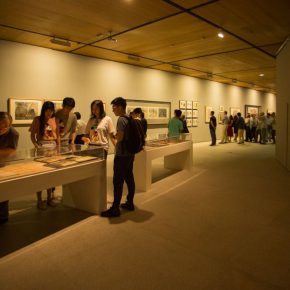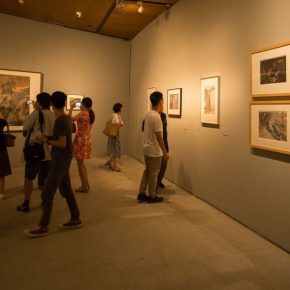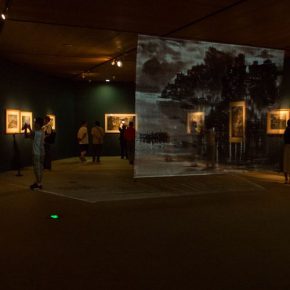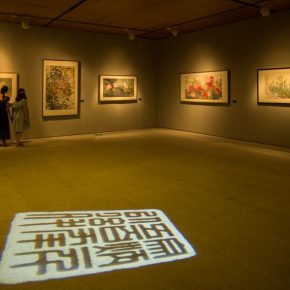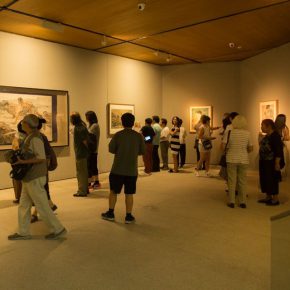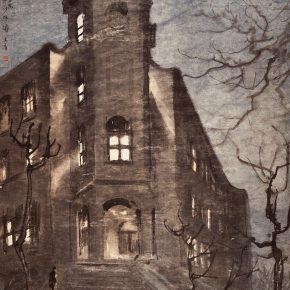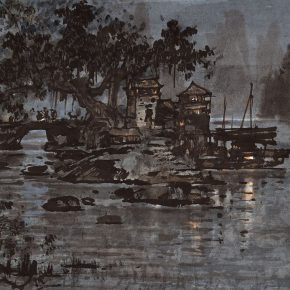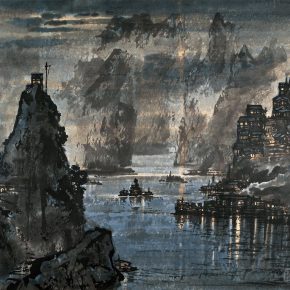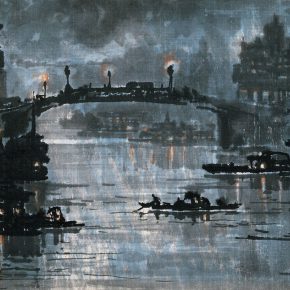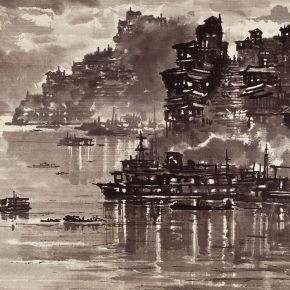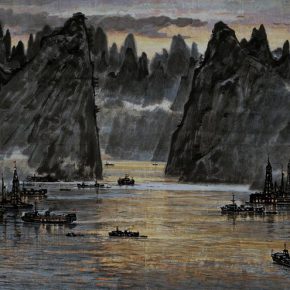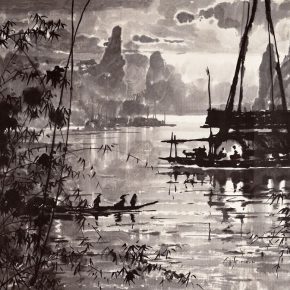
On June 27, 2017, hosted by CAFA, the “Harmonized Beauty” Exhibition Commemorating the 100th Anniversary of Zong Qixiang’s Birth opened at the CAFA Art Museum. The exhibition comprehensively displays Zong’s creative trajectory using 3 parts for the exhibition, independent quality and artistic ideals, as well as systematically researching and comprehensively reviewing Zong Qixiang’s road towards art exploration. From the overall perspective of Chinese painting of the 20th century, this exhibition attempts to offer a comprehensive and in-depth study, to rediscover a master. During the exhibition, Yu Yang, the curator and Director of the Department of Chinese Painting Research, CAFA, was interviewed by CAFA ART INFO, to share the curatorial origin, expectation and purpose, curatorial method and the understanding and cognition of Zong Qixiang’s art, as well as the research on modern Chinese Painting.
Interview Time: June 30, 2017
Venue: CAFA Art Museum
Interviewer and copywriter: Zhang Wenzhi
Translated by Chen Peihua and edited by Sue/CAFA ART INFO
CAFA ART INFO: In addition to the background of the “Hundred Years of Glory” series of events to celebrate the centennial anniversary, what factors contributed to the planning and display of the exhibition of “Harmonized Beauty”?Yu Yang: Zong Qixiang was born in 1917, and it is his centenary birthday this year. The exhibition itself also assembles a number of materials collected by the family members, that have never been shown, in addition to some works collected by the CAFA Art Museum in the past, while the exhibition also tries to place Zong Qixiang in the context of Chinese painting in the past hundred years of evolution, to reduce the historical context of artistic creation and thinking of Zong Qixiang. In the course of the development of Chinese painting in the 20th century, Zong Qixiang was a vital part for the integration of Chinese painting and Western painting in the Chinese painting world which was dominated by “Xu Beihong and Jiang Zhaohe system”, and a key member to turn the traditional Chinese painting towards modern Chinese painting. It is intended to tell people that it was just such a painter who had made outstanding contributions to the hundred years of Chinese painting during the history of CAFA.
CAFA ART INFO: Compared with Li Keran, Ye Qianyu of the same period, Zong Qixiang is hardly remembered, please introduce the research work in the process of the implementation of the exhibition? What will be advanced after the exhibition?
Yu Yang: During the planning process of this exhibition, we have done a lot of research work, for example, the study on Chinese painter groups that were involved in the overall artistic achievements and thoughts of Zong, the sifting through of Zong’s chronicle, the staging of his life stage, the classification and appreciation & research of the works. Zong’s paintings have been mainly collected by family members, so the quantity of works is satisfactory for the selection of works for the ultimate formation of the exhibition system and a complete show.
Zong Qixiang’s works have a special significance in the history of modern Chinese art, both rooted in the realistic concern of social history, and also stemming from a deep concern of world suffering. But Zong’s art has not been well-known until today, we hope through this exhibition to sort out his artistic context, and also try to integrate it into the inheritance of CAFA’s spirit, through the exhibition of the works, the sifting of literature, and academic exploration, while placing him in the teaching of Chinese painting in the 1960s and 1970s.
CAFA ART INFO: The exhibition is divided into three parts: “Concern about People’s Livelihood and Patriotism”, “The Use of Ink Color to Display the Brilliance of Night”, “The Land of Southern China Brought Late Splendor”, what is the logic of the idea to divide it into three parts? What is the relationship between the curatorial idea of the exhibition and the artistic context of Zong Qixiang?Yu Yang: We have a detailed staging and research of Zong Qixiang’s life and creation, giving a lot of consideration to the life stage as the warp, and taking the style of work as the weft.
When we conceived of the three parts, it also brought three epochs, which was not only the three stages of the artist’s personal history, but also the three contexts of the times. In the first part entitled “Concern about People’s Livelihood, and Patriotism”, it mainly showcases his creations and sketches themed on wars in the 1940s, as well as the literature, these works have shown his care of the national catastrophe and the human suffering. The 2nd part of “The Use of Ink Color to Display the Brilliance of Night” highlights and showcases Zong’s creations of landscape, flowers and birds, characters that blend China and the West, as well as his teaching on ideas and practices. In the 1940s, Zong began to draw night landscape paintings in Chongqing, with the encouragement and inspiration by Xu Beihong, and Zong found his own language using ink to show the night. In the 3rd part of “The Land of Southern China Brought Late Splendor” mainly showcases his sketches of the landscape of Guilin, Guangxi, after the mid-1970s, including his sketches of watercolor shown in the small special exhibition hall. After the end of the “Cultural Revolution”, he mainly lived in Guilin, Guangxi, and spent the last two decades of his life in the green mountains and waters, fabulous forests in Guilin, where his footprints and sweat remain. In addition, it also showcases Zong Qixiang’s innovative modern works of the 1980s, including his portrait paintings and a series of paintings of the human body with lights.
The three parts of the exhibition are also the epitome of the artist’s artistic creation, through which we can see his personality and temperament. This program received the Ministry of Culture’s “2017 National Art Collection Award and Financial Support”, and the study will continue to advance. Relevant literature, including Zong’s biography, letters, as well as a series of research articles will also be published.
CAFA ART INFO: In the exhibition site, people can see some projections and exhibition designs that are close to the artistic concept of Zong Qixiang’s night landscape paintings, would you like to talk about the special arrangements in processing the space?
Yu Yang: We would like to make a breakthrough in the planning of the exhibition, including the use of multimedia, with a combination of sound and light as the highlight, taking the night landscape part as an example, it is dim in the exhibition hall, and a semi-transparent curtain is hung in the middle, with the projection forming the effect of water ripples, in fact, the use of modern technology offers a re-interpretation of Zong’s night view, it restores the feeling of the night of the Guilin landscape, accompanied by the sounds of insects and birds, as well as the quiet natural sound of a field at night. The main color of the entire exhibition also takes the indigo color of Zong’s night landscape paintings, showing a quiet and dark style. Besides, each section starts with a illuminant in the form of his seal which is projected onto the ground or on the exhibiting panel and brings out the theme, as interpreted through the chronology together with the pictures, so that the audience have a clearer understanding of Zong’s artistic life.
CAFA ART INFO: Zong Qixiang adhered to the path of “blending China and the West”, which penetrated Xu Beihong’s ideas, how did he begin to follow Xu Beihong? What was his breakthrough point on this path?Yu Yang: In the 1940s, Zong Qixiang used watercolor to draw night landscape paintings, which were later sent to Xu Beihong, which also received very positive feedback, and Xu suggested that he use ink painting to show night landscapes, Xu personally hosted the exhibition of “Night View of Chongqing” in 1942, and also wrote an article to comment that, “Zong Qixiang uses paper sourced in Guizhou together with the brush and ink for Chinese painting, to highlight the lights at night of Chongqing, with uneven buildings, rugged mountains and street scenes, which stemmed from very simple brush and ink.”
CAFA ART INFO: Zong Qixiang was a master, and also a teacher, what were his ideas in teaching? What has impacted on the present teaching style of Chinese painting of CAFA?Yu Yang: Zong Qixiang’s artistic exploration was closely linked with his educational thought on the academy. In the 1950s and 1960s, the teaching of Chinese painting of CAFA emphasized the cultivation of the trinity of art, life and creation, as well as the training in the ability of sketching, line drawing, copying and drawing from memory, while Zong Qixiang was an unique painter with his special ink and color painting, he refined a realistic style and beautiful form. He combined the traditional ink and Western realistic techniques to perform for him using of ink and color, breaking the stylized modeling and coloring method of traditional Chinese painting, using harmonious and elegant colors and ink full of tension with realistic shaping, to promote the new creative teaching practice of Chinese painting, which was advocated and encouraged by Xu Beihong, to an in-depth level. Combined with the naming and teaching pattern of the “Department of Ink and Color Painting” specialty at that time, his creative style making the impact obvious.


